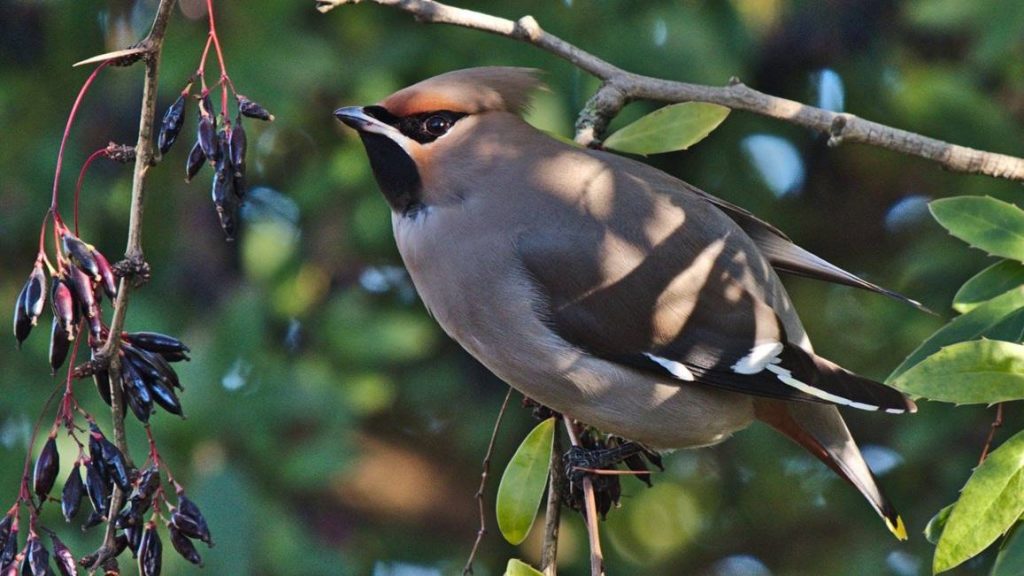
February 2019 was the second successive dry, sunny month at RBGE. Rainfall was only 18.4 mm, slightly more than January’s record low of 12.2 mm but only 39% of the long-term average. Total sunshine was 109.6 hours, 146% of the average. The month started cold and ended exceptionally mild. Nationally, the UK winter maximum was broken three times in the last few days of the month, with the highest temperature being 21.2°C at our sister garden at Kew; a new Scottish record of 18.4°C was also recorded at Aboyne in Aberdeenshire. RBGE did not quite reach these high temperatures because of a cooling breeze; nevertheless the maximum recorded temperature, 16.0°C, was well above normal, as was the mean temperature (11.0°C, compared with the long-term average of 7.37°C). The lowest air minimum was -6.3°C and the lowest grass minimum -10.1°C. There were four additions to the Garden’s wildlife total. Three of these were fish: an acknowledgement at last that Minnows and Three-spined Stickleback have both been plentiful in the Pond (and enjoyed by visiting Kingfishers!) for many years, and a historic record of a Perch in the Pond about 25 years ago. The fourth addition, and the only one for February itself, was a new micro-moth for the Garden’s list. These bring the total list up from 1,077 to 1,081.
Birds Forty-one species of bird were recorded at RBGE during February, two more than in January. Notable records included a Peregrine on around the 20th (the recorder was uncertain of the date), the first record of this falcon since 2016, and Brambling in the Upper Woodland area on 6th and 7th, the first definite records since the very cold winters of 2011 and 2010 although there was an unconfirmed record last year. The Waxwings were seen again on the first three days of the month and a wintering Blackcap on 11th but there was no evidence of the wintering Chiffchaff. Redwings were again present all month and there were no fewer than eight sightings of Grey Wagtail. Kingfisher was less frequent, being seen on only nine dates, almost all of them in the first half of the month apart from one on 20th. Nuthatches were reported on 14 dates. A Mute Swan flew over on 5th and Pink-footed Geese on 25th. The year’s first record of Stock Dove was made at last, on 14th. The complete list of 41 species recorded during February 2019 was: Blackbird, Blackcap, Black-headed Gull, Blue Tit, Brambling, Bullfinch, Carrion Crow, Chaffinch, Coal Tit, Dunnock, Feral Pigeon, Goldcrest, Goldfinch, Great Spotted Woodpecker, Great Tit, Greenfinch, Grey Heron, Grey Wagtail, Herring Gull, Jackdaw, Kingfisher, Long-tailed Tit, Magpie, Mallard, Mistle Thrush, Moorhen, Mute Swan, Nuthatch, Oystercatcher, Peregrine, Pink-footed Goose, Redwing, Robin, Siskin, Song Thrush, Sparrowhawk, Stock Dove, Tree Creeper, Waxwing, Wood Pigeon, Wren.
Mammals and amphibians A Fox was seen on three dates (1st-3rd) and evidence of the resident Badgers’ activities was evident throughout. Palmate Newt was seen on 21st and 22nd, and Common Frog on 25th.
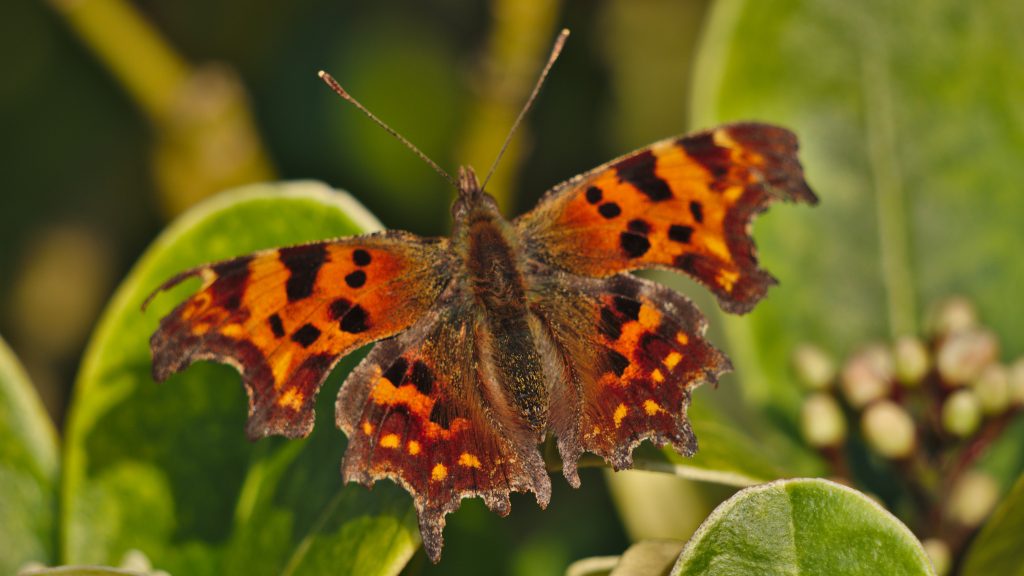
Insects and other invertebrates: Largely due to the mild to exceptionally mild weather in the second half of February 2019, there was noticeably more invertebrate activity than in January. The year’s first three butterfly species were recorded: Peacock on 14th, 21st, and 26th, Red Admiral on 26th, and Comma on 27th. All of these species overwinter as adults. Some of the butterflies seemed very fresh and immaculate.
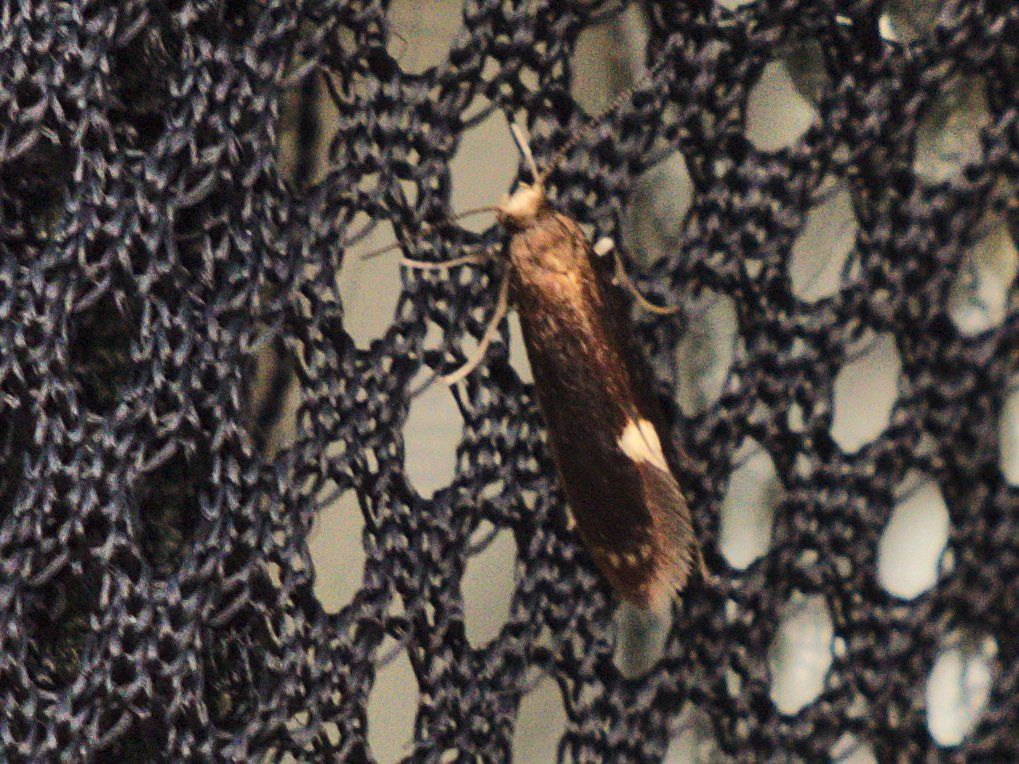
The only moth recorded was Fern Smut on 14th, the Garden’s first actual new record for 2019 (the other three February additions being historic or current but overlooked fish records, as noted above). This moth landed on the jacket of Andrew McKie, one of the wildlife photographers that visit the Garden regularly and Ken Dobson, another photographer with him, took the photograph published here. It was initially thought to be a caddisfly species but was identified as Fern Smut by Nigel Voaden, the moth recorder for Fife, and later verified by the Lothian moth recorder, Alastair Somerville, who said it might be the third record for Midlothian.
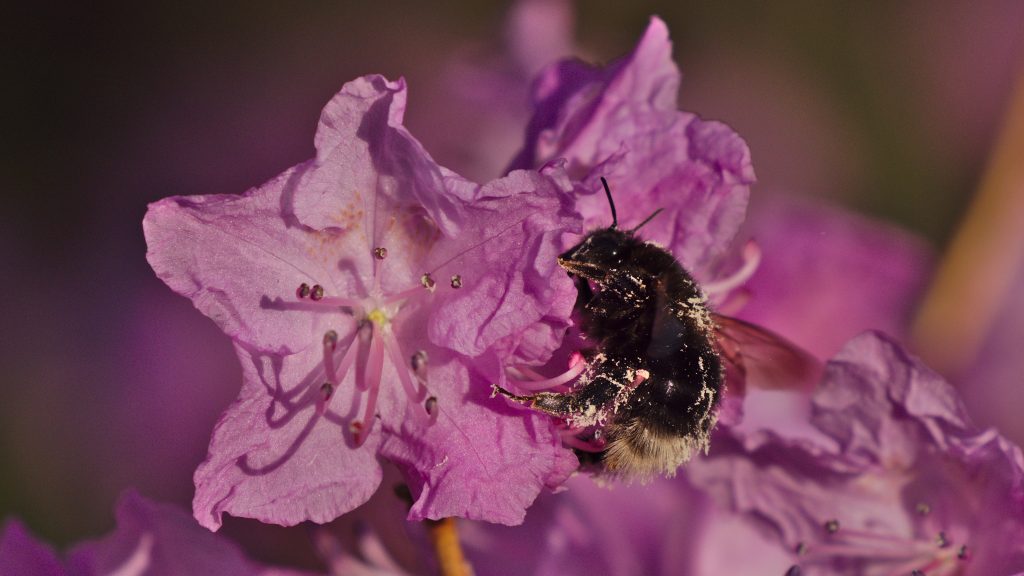
Bees recorded during February included Honey Bee (21st onwards), Tree Bumblebee (several dates, from 12th), Common Carder Bee (26th), and Large Red-tailed Bumble-bee (21st, 22nd and 26th). An unusual bumblebee, apparently all-black with a white tail, photographed on 26th visiting Rhododendron praecox, was most likely a melanic Tree Bumblebee; several typical individuals of that species were also seen visiting the same flowers that day. A solitary bee visiting snowdrop flowers on 26th, presumably for nectar, was most likely Andrena clarkella, one of the first species of the genus to emerge, although it normally favours willows, which were not flowering at the time.The first Common Wasps of 2019 were also seen, on 15th, 24th and 26th. A Black Ant was also recorded on 26th.
Hoverflies began to make their appearance, with Marmalade Hoverfly and Common Drone-fly both seen from 11th/12th onwards on mild days while Melanostoma mellinum was also recorded on three dates from 22nd. A Banded Hoverfly was also seen on 21st and a bluebottle, Calliphora vicina on 26th. The first records for 2019 of two ladybird species were made in February: Seven-spot and Pine Ladybird on five and seven dates respectively from 11th. A small spider photographed in its web on 26th at present remains unidentified. Common Water Slaters were photographed in one of the ponds on 24th. Finally, an as yet unidentified snail remained unmoved, and unmoving, on the Botanic Cottage from 11th onwards to the end of the month.
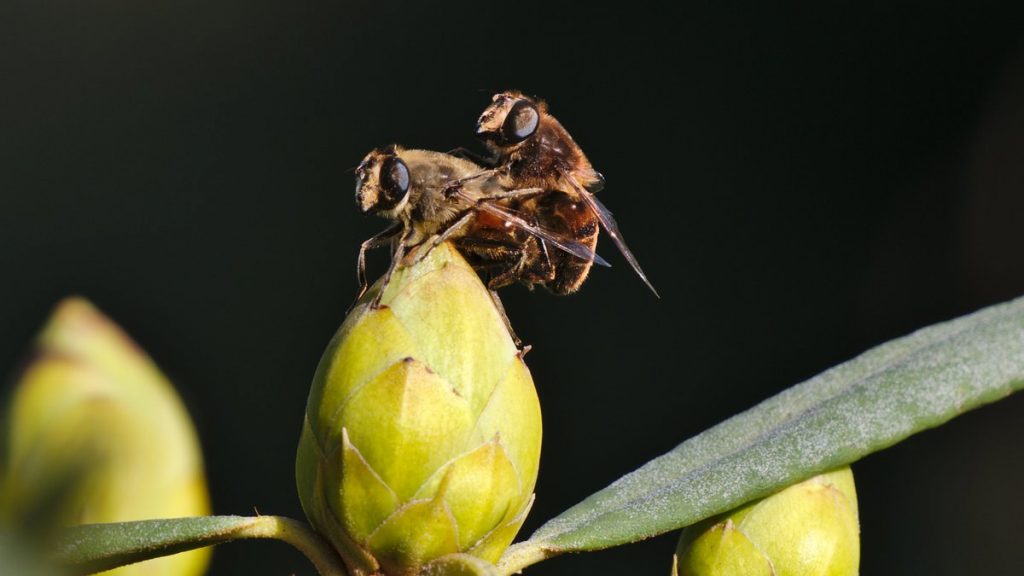

Rona
That is the most strikingly beautiful photograph of a waxwing that I have ever seen, ever. Absolutely perfect colours/tones together with those gleaming berberis fruits. Mr Ken Dobson is genius!